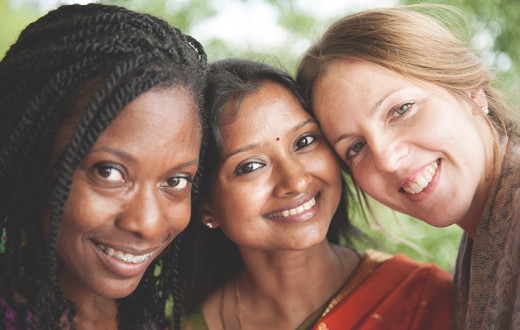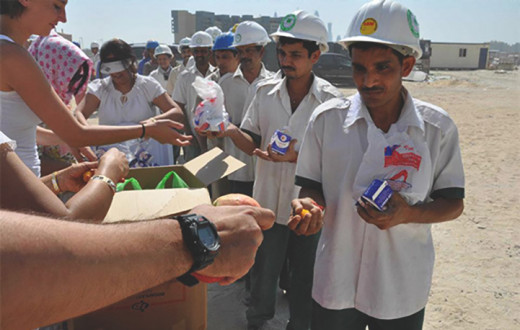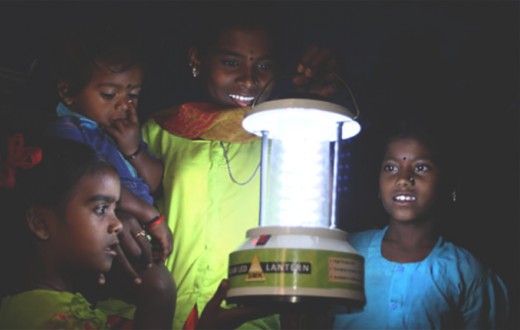«Образование - величайший правитель цивилизации. Оно способно наделить правами и возможностями самых слабых из слабых, принести мир во всем мире и облегчить бедность. Его часто считают единственным освещенным путем в поисках счастья».
- Гурудев Шри Шри Рави Шанкар
Краткая информация
Искусство Жизни, вдохновленное видением Гурудева Шри Шри Рави Шанкара о ценности образовании для всех, обеспечивает бесплатное целостное и основанное на ценностях образование для детей, которые находятся вне досягаемости других государственных или частных программ в рамках своей программы «Забота о ребенке», известной также как «Подари улыбку».
Эффективность предоставляемого образования измеряется через:
- успеваемость
- общий успех и удовлетворение ребенка
- Развитие детей во всех сферах жизни: социальная, психологическая и материальная.
Наши проблемы и подход
Многие школы Искусства Жизни работают в отдаленных районах с ограниченным доступом, где финансовые трудности в семье приводят к тому, что дети бросают школу, чтобы помочь семье с доходом. В некоторых случаях безопасность является проблемой из-за массовых беспорядков в регионе.
Основное внимание уделяется образованию с прививанием правильных ценностей, которое помогает укреплять ум посредством йоги, медитации и других техник, трансформирующих изнутри. Методология способствует когнитивному, физическому, эмоциональному, социальному и духовному росту, что ведет к образованию, которое является целостным.
Школы в рамках программы «Подари улыбку» подразделяются на три категории: села, племена, трущробы.
Посмотрите веб-сайт по проектам
Сельские школы
Сельские школы работают в деревнях, расположенных ближе к городам, обычно с подъездной дорогой и электричеством. Чтобы поощрить посещение школы, предоставляется бесплатный транспорт, питание, униформа, книги и сумки, а с родителями проводится беседа о важности образования. Уровень посещаемости составляет 98%, а отсев равен нулю.
Школы в племенах
Термин «племена» относится к небольшим группам в Индии, этническое происхождение, культура и образ жизни которых отличаются от основного индийского общества. Как правило, они находятся в отдаленных районах, в окружении лесов без дорог и электричества. Большинство из них испытывают экономические трудности, и культура племенных групп, сохраняющаяся в течение тысячелетий, теперь сталкивается с угрозой исчезновения.
Первые школы были созданы в 1999 году в племенных районах Джаркханд, Западная Бенгалия и Трипура, и в настоящее время в 20 племенных школах учатся более 2800 детей. В этих школах посещаемость составляет 97%, а отсев составляет менее 15%. 48% студентов составляют девочки - в этих областях это не распространено. Учителей набирают из местных районов и обучают в Институте по подготовке учителей.
Школы в трущобах
Городские трущобы сталкиваются с уникальными проблемами, включая бедность, проблемы гигиены и перенаселенность. Дети из трущоб часто недоедают и попадают в сети преступности и насилия. Различия между городскими жителями и трущобами, расположенными в сердцах городов, неизменно производят впечатление на молодых людей. Отсутствие бесплатного образования делает их уязвимыми для таких привычек, как наркотики, алкоголь и ведут к склонности к преступлениям, чтобы зарабатывать деньги.
Воздействие:
Свыше 53 361 детей получают бесплатное образование в 422 школах 20 штатов Индии
в сельских, племенных и трущобных районах, где широко распространены детский труд и бедность
Школьники первого поколения
среди многих школьников
Сокращение детского труда и замужества девочек в раннем возрасте
в деревнях со школами Искусства Жизни
Обзор проектов
- The Art of Living’s 1st school
- Jharkhand Tribal School
- A New Hope @ The Wall of Death
- Dharavi School
- Victim of child labor turns into a provider of education
The Art of Living’s 1st school, rural Bengaluru, India
The Ved Vignan Maha Vidhya Peeth (VVMVP) was the first rural school started by Gurudev Sri Sri Ravi Shankar in 1981. The project started when Gurudev observed some local children playing in the dust near The Art of Living Center without access to education. A local volunteer was appointed to look after the children to give them basic lessons in hygiene, teach them educational games, and to serve them free healthy food for lunch. The school started attracting more students and a formal educational structure was established. Initially, daily wage earners were reluctant and children from only two villages attended the school. Today, the numbers have grown exponentially.
One of the students was a young girl called Priyanka. She studied from 8th to 10th standard, topped the school 10th standard exams, went on to do a diploma course in Electrical & Electronics and then got a job in Bengaluru Metro Rail Cooperation Ltd. She piloted the 1st Bangalore Metro as its train operator.
“At this young age, my daughter would have been working in the farms. We never dreamed she would get an education! I am so happy to see her going to school!”
- Mrs. Savitri, a parent whose child is a first-generation school-goer
Jharkhand Tribal School: Taking education to the Hinterlands
In 1999, when Gurudev asked Brij Chawla to do something for education in tribal areas, he resigned as General Manager in Bhartiya Cutler Hammer to work for Naxal-affected tribes in Jharkhand. He chose Ghatsila, deep in the tribal belt. One has to jump several feet to get off the train in the dark, with just a few minutes to do so. Chawla is in his 70s and often travels with big boxes carrying uniforms or books or other school material.
Today, there are 20 tribal schools dotted on Jharkhand’s map. Schools that have a high-quality infrastructure, including a multimedia room run by solar power. The instruction of education begins in local languages: Mundari and Oraon, and uses the Akiki script.
“My daughter, Dukhi, is the first person in our entire family to be getting an education. The others do not even know how to read or write. We are very grateful for this.”
- Jaba Soren, Jharkhand, whose daughter studies in one of the tribal schools run by The Art of Living
A New Hope @ The Wall of Death
After undergoing the Youth Leadership Training Program, Hiramati Sinha decided to open a free English medium school at the "Wall of Death" on the India-Bangladesh border in Bhuvaneshwarnagar, Assam, in 2003. She visited 1,500 families and encouraged parents to send their children. Despite a lukewarm response, Hiramati started Sri Sri Gyan Mandir with only 15 children. It now runs with almost 600 students. Several students are from local fishermen families, who are not educated themselves. A number of children of Armed Forces have also studied here.
Hiramati was given the Dr. B.R Ambedkar National Philosopher Award by Bharath Dalit Sahitya Academy in December, 2015, for opening this school. She has also started schools in Broninglo and Keipleo of the N.C. Hills District, in Dhargarband of the Karimgaj District, and in Khasiapuji of the Kasar District, some of which are insurgent areas.
Dharavi School: A Center of Education in Asia’s Largest Slum
Sri Sri Vidya Mandir is the first English medium school in Dharavi, Asia’s largest slum. Despite numerous challenges, such as the children’s difficult backgrounds with a history of abuse, unavailability of land, and parental indifference towards education, the school has thrived and succeeded in bringing education to the local residents. Over 400 children study at the Dharavi School.
Victim of child labor turns into a provider of education
Vinod Chauhan’s father was an alcoholic tailor and his mother a seasonal farm laborer. Due to his father’s habit, Vinod and his brother had to start working in a tea shop from morning to midnight, followed by a series of odd jobs – selling kites, selling vegetables, gardening, and so on. “We weren’t encouraged to focus on our education. I failed class 10 twice, and I did not even know how to read or write Hindi properly at that age.”
After finishing YLTP, Vinod got inspired to study, cleared class 10, and went on to complete his graduation in Commerce. “The growth in my personal life gave me more and more confidence and resolve to bring education to the children of poorer communities. I want to help other children, so they don’t go through what I had to. My dream is to see every child educated and to see them blossom into independent individuals.” Today, he runs a free school for over 250 students from poor communities in Dhar, Madhya Pradesh.








